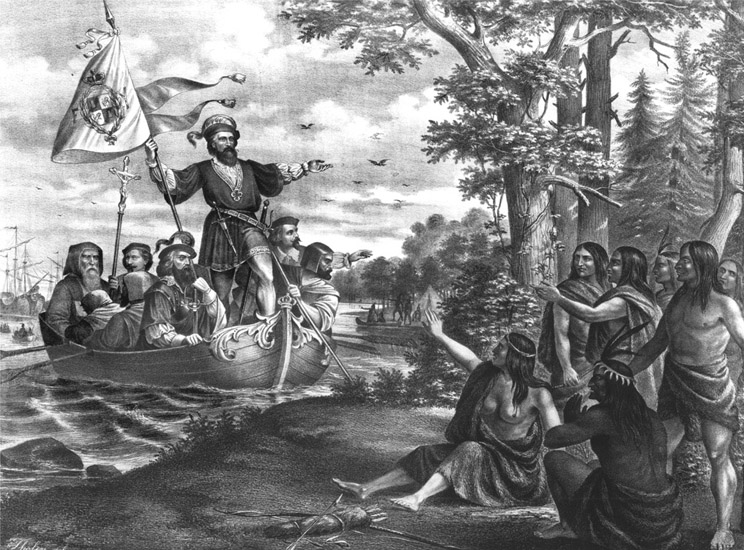Born to a family of weavers in the Italian port of Genoa, Christopher Columbus determined to go to sea when still a boy. As a young man, he worked on ships in the Mediterranean and sailed as far west as Ireland and Iceland. He eventually settled in Lisbon, which Prince Henry the Navigator had recently transformed into the main center for trade and exploration in western Europe. The Portuguese were busy establishing trade routes with the Far East by circumnavigating Africa. Columbus became convinced that ships could more easily reach the Indies by sailing west around the globe. Certain that Japan was only 3,000 miles away from Lisbon, he hoped to raise a fleet of ships, head west by dead reckoning, and found a great city in the Far East that would control most of the trade with Asia.

Christopher Columbus’s landing at San Salvador Island (in the modern-day Bahamas) on October 12, 1492, inaugurated the conquest of the Americas and the rise of Europe to global economic and political hegemony in the second half of the second millennium. (Library of Congress)
Early on the morning of October 12, 1492, Columbus and his men spotted the island of San Salvador in the moonlight. For the next three months, they explored the Bahamas, Cuba, Haiti, and Hispaniola. Columbus was convinced that he had discovered islands off the coast of China and asked the Arawak Indians to lead him to the imperial capital. When Columbus returned to Spain, Ferdinand and Isabella awarded him with the titles Admiral of the Ocean Sea and Viceroy of the Indies. They outfitted a much larger expedition and sent him on his second voyage in September 1493. Still convinced he had found the Indies, Columbus spent three years discovering and exploring more islands in the Caribbean.
On his third voyage in 1498, Columbus discovered Trinidad and the northern coast of Venezuela. He now admitted that he had found an “Other World,” but still believed it was directly southeast of China. On his fourth and final voyage in 1502, he explored Honduras in an attempt to find a water route to the Pacific Ocean. Four years later, he died forgotten and penniless in Valladolid, Spain. Although he never clearly understood that he had discovered a new world, Columbus had opened more possibilities for exploration and trade than any other single person in recorded human history.
Mary Stockwell
See also: Exploration and Trade.
Bibliography
Morison, Samuel Eliot. Admiral of the Ocean Sea: A Life of Christopher Columbus. Boston: Little, Brown, 1942.
